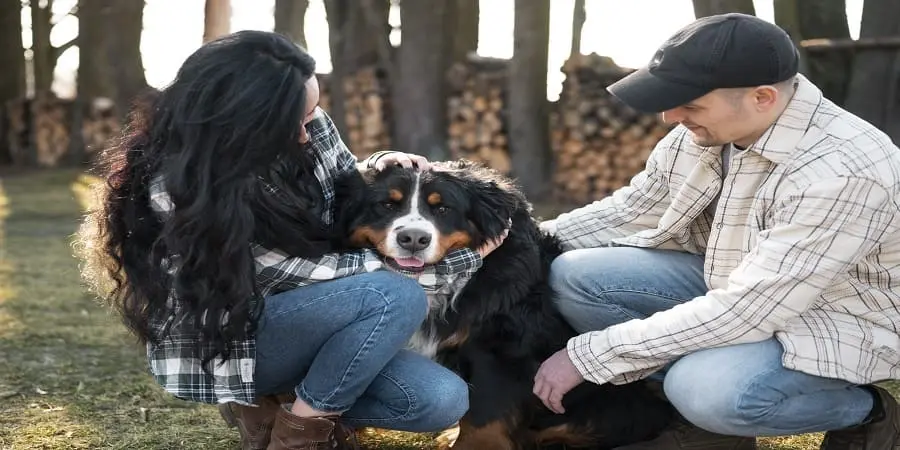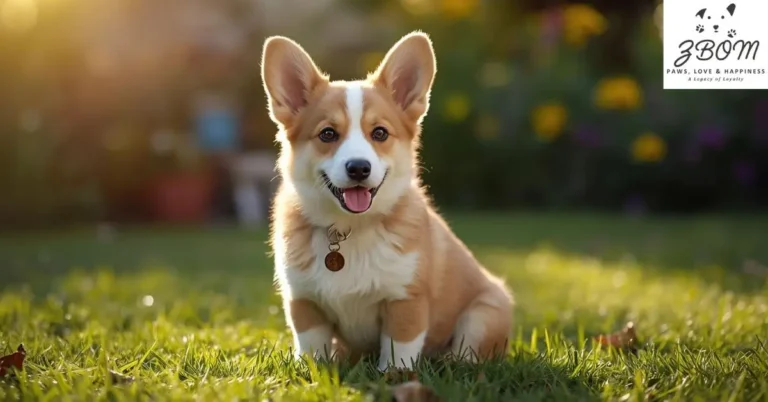
How Old does a Dog have to be a Breed
Breeding dogs is a serious responsibility that requires careful understanding of their physical and emotional maturity. Knowing the right age for a dog to breed is one of the most important parts of responsible breeding. How Old does a Dog have to be a Breed It’s not just about when a dog can reproduce, but when it should reproduce for the health and safety of both the mother and her puppies. Breeding too early can lead to complications, weak litters, and long-term health problems, while breeding too late can also cause risks related to fertility and delivery.
Every breed develops at a different pace—small breeds mature faster, while larger breeds take more time to reach full adulthood. Understanding these differences helps breeders make thoughtful decisions that protect the well-being of their dogs.
Zbom, Before any breeding takes place, proper health checks, genetic screenings, and maturity assessments are essential. Responsible breeding is about improving the breed, not just producing puppies. This introduction will explore the ideal age for both male and female dogs to breed, the importance of maturity, and the ethical considerations every breeder must follow to ensure healthy, happy, and well-adjusted puppies that meet breed standards and live fulfilling lives.
Short Answer about: Prepare Yourself for Breeding a Litter of Puppies
Before breeding a litter of puppies, ensure both dogs are healthy and have completed all vet checks.
Prepare a clean, warm, and quiet whelping area in advance.
Gather essential supplies like towels, heating pads, and disinfectants.
Learn about the birthing process and be ready to assist if needed.
Be patient, responsible, and committed to caring for the mother and puppies.
Prepare Yourself for Breeding a Litter of Puppies
Dog breeding has long been admired as both a breeding art and science, where passion meets responsibility and knowledge guides every decision. True dog breeding is far more than simply pairing two dogs—it’s about understanding genetics, temperament, and health to improve the breed. Every responsible breeder recognizes that responsible breeding is not just about producing puppies but about preserving and strengthening the qualities that make each breed unique.
Also Read: 8 Best Integon National Insurance Strategies
A deep breeding passion often grows from the special human-dog bond, inspiring breeders to dedicate their time, energy, and love to their animals. However, the journey is filled with breeding challenges that test patience and commitment. From the costs of veterinary care to the emotional toll of setbacks, breeding costs and efforts can be significant. That’s why every breeder must approach this work with breeding responsibility and genuine breeding devotion, ensuring each decision is made in the best interest of the dogs.
Before planning a puppy litter, breeders invest time in learning about breeds and gaining hands-on breeding experience. Breeding knowledge and proper dog breeder education are the foundations of success, helping ensure ethical practices and healthy, happy puppies. Through careful breeding preparation, ethical breeding, and unwavering breeding dedication, true breeders contribute positively to the world of purebred dogs, honoring both tradition and the deep connection shared between humans and their loyal companions.
Also Read: Navigating Health Insurance Options for the Self-Employed
Breed to Improve
A responsible breeder understands that the heart of purebred dogs breeding lies in the commitment to breed to improve. This guiding principle ensures that every generation of dogs becomes healthier, stronger, and closer to ideal breed standards. True breeders avoid kennel blindness, meaning they take an honest look at their own dogs and see both strengths and weaknesses with clear eyes. Such honest assessment is vital in the breeding process, as it helps identify areas that need refinement before any mating takes place.
Dog evaluation plays a key role in achieving meaningful breeding goals. Each breeder must recognize dog flaws—whether in structure, temperament, or health—and focus on selecting a mate that complements and balances flaws to produce a better dog production outcome. Can Dogs Get Other Dogs Sick, This careful and thoughtful approach ensures that every puppy born is a quality pet with the potential to represent the best of its breed.
To gain an objective opinion, many breeders attend a dog show where their dogs can be compared against others according to official breed standards. How Old does a Dog have to be a Breed Additionally, consulting the national parent club offers valuable guidance and mentorship. Through constant evaluating dogs, practicing responsible breeding practices, and striving for continuous dog improvement, true breeders uphold the noble purpose of enhancing the breeds they love and preserving their excellence for future generations.
Also Read: 8 Common Mistakes in “Mistborn Adventure Game” to Avoid
Understand the Commitment
Raising puppies is truly a full-time job that requires patience, dedication, and love. In the early days, dam care plays a crucial role as the mother tends to her puppies’ every need. However, unexpected challenges such as an orphaned litter or a mother with no milk can occur. In these cases, the dog breeder responsibility becomes even greater. A breeder must ensure a safe environment, providing a warm and dry place along with proper food and water for both the dam and her pups.
Raising puppies is truly a full-time job that requires patience, dedication, and love. In the early days, dam care plays a crucial role as the mother tends to her puppies’ every need. Yucaipa Vet, However, unexpected challenges such as an orphaned litter or a mother with no milk can occur. In these cases, the dog breeder responsibility becomes even greater. A breeder must ensure a safe environment, providing a warm and dry place along with proper food and water for both the dam and her pups.
As the puppies grow into weaned puppies, their puppy care demands increase significantly. The daily routines of grooming, training, and veterinary care require constant attention and compassion. Beyond time, the financial cost of breeding can be high—from genetic screening and health tests before breeding to whelping expenses and caring for any puppy complications that may arise.
Responsible dog breeders go beyond just raising dogs; they ensure puppy ownership is a lifelong commitment. Through careful screening of prospective owners, breeders seek individuals who understand their breed knowledge, including the pros and cons of ownership. It’s essential to consider matching owners with the right breed—taking into account grooming needs, training requirements, and family suitability.
Also Read: 2025 Nissan’s Frontier vs. Competitors
Choose a Suitable Mate
When planning a mating pair selection, it is essential to carefully evaluate both the sire and dam to ensure the best outcomes for the litter as this allows the resulting litter registration and ensures that all dogs involved meet recognized breed standards. Choosing the right breeding partner requires attention to complementary traits, with the goal of balancing strengths and weaknesses. Examining bloodlines can help select a mate that enhances qualities such as coat quality, overall dog traits, and dog appearance.
Breeder advice and breeder experience are invaluable in this process, along with thorough research into the breed. One of the most important considerations is temperament, which is influenced by hereditary traits but can also be shaped by external factors. Different breeds have been developed over generations for specific purposes, such as sled dogs, hunting dogs, or retrieving dogs, making breed temperament a key factor in selecting a mate. Understanding temperament inheritance ensures that puppies will grow into well-adjusted adults.
Also Read: 7 Best Strategies to Lower Your Progressive Home Insurance Premiums
Equally critical are health considerations. How Old does a Dog have to be a Breed, Awareness of adverse health traits, breed health, and the health status of both dogs is necessary for mate selection. The ultimate goal is improving the breed through careful health testing, understanding dog genetics, and practicing responsible breeding. By combining these factors, breeders can produce healthy, balanced, and high-quality puppies that uphold the integrity of the breed.
Know Your Genetics
A responsible dog breeder knows that a solid genetics understanding is essential for producing healthy and well-balanced puppies. Puppy health, puppy soundness, puppy looks, and puppy temperament are all influenced by gene inheritance, making careful mating pair selection critical. Studying the pedigree of each dog allows breeders to plan for desired litter qualities while avoiding potential genetic problems or breed-specific genetic diseases.
Mercedes-Benz Bellevue, Understanding patterns of dominant inheritance and recessive inheritance is key to predicting how traits and conditions may appear. How Old does a Dog have to be a Breed, Dogs that are homozygous for a trait will express it fully, while heterozygous dogs may be carrier dogs, appearing healthy but capable of passing abnormal genes to their offspring. Some traits are more complex, caused by polygenic disorders or multiple gene inheritance, where the combined effect of several genes determines the outcome. This complexity requires breeders to pay close attention to patterns and genetic mutation occurrences.
Additionally, chromosomal anomalies and chromosome defects can lead to serious issues, as dogs normally have 39 pairs of chromosomes carrying all essential genes. Being aware of hereditary conditions and performing thorough genetic screening ensures better dog health and safeguards hereditary traits for future generations. Applying dog breeding science, accumulating breeding knowledge, and practicing breeding responsibility allow breeders to produce puppies that are not only healthy but also exemplify the best qualities of their breed.
Finalize a Stud Contract
Before moving forward with breeding, it’s essential to complete all health checks and genetic screenings to ensure both the bitch and perfect mate are healthy and suitable for reproduction. Once you have confirmed the health and compatibility of your dogs, the next step is to plan the mating details carefully to ensure a successful outcome.
An important part of responsible breeding is working with the stud dog owner to establish a clear breeding contract. The stud fees and other terms should be outlined in a written agreement, detailing the obligations of each party involved in the transaction.How Old does a Dog have to be a Breed, All parties should participate in contract signing, and each should receive a contract copy for reference. Consulting a lawyer for advice during the drafting process can help ensure the agreement is legally sound.
The stud fee payment can take different forms, such as cash, pick of the litter, or puppy compensation, with the stud owner responsibility being to collect the fee as agreed. Clear breeding arrangements and understanding of potential contract disputes are critical to responsible breeding. How Old does a Dog have to be a Breed, Thoughtful mating preparation, careful stud dog selection, and honoring all contractual obligations create a smooth, professional, and ethical breeding experience.
Also Read: How to Determine French Bulldog Litter Size
Perform Pre-Breeding Health Checks
Producing good puppies begins long before mating takes place and relies heavily on careful pre-breeding care and conditioning of both the sire and the bitch. Proper conditioning ensures high offspring quality, which depends on consistent veterinary care, thorough genetic screening, and pre-breeding tests. Alongside medical checks, regular exercise and balanced nutrition are essential to maintain bitch fitness and muscle tone, as well as a positive mental condition and stable temperament. How Old does a Dog have to be a Breed, Avoid breeding an insecure bitch, as her emotional state can affect her ability to be a good mother.
About one month before mating, the bitch should undergo a pre-breeding physical examination by a qualified veterinarian knowledgeable in canine reproduction. Getting Your Dog Neutered, Ensure her vaccinations are current, and she receives appropriate parasite treatment. Both the bitch and stud dog may also need brucellosis testing to prevent infectious diseases that can lead to sterility or spontaneous abortion.
The timing of breeding is linked to sexual maturity, which varies depending on dog breed differences. Small breeds often mature faster than large breeds. How Old does a Dog have to be a Breed, Male fertility begins around six months, and healthy stud dogs or adult males can remain fertile into old age.
Estrus, also known as season or heat, marks the period of female fertility. A first estrus usually occurs between six months and two years of age, but the bitch should not be bred during her first estrus. Her estrus cycle has four stages: proestrus, when she attracts males but will not mate; estrus period, when ovulation occurs and she is receptive; diestrus, dominated by progesterone, during which false pregnancy may occur; and anestrus, a period of no sexual activity.
Also Read: 8 Best Briliant VR Racing Game Pointers
Careful breeding preparation using all these considerations ensures responsible breeding, producing healthy puppies while safeguarding the well-being of both parents.
The bitch’s cycle is divided into four periods.
- Proestrus: The bitch attracts males, has a bloody vaginal discharge, and her vulva is swollen. Proestrus lasts approximately nine days; the bitch, however, will not allow breeding at this time.
- Estrus: During this period, which also lasts approximately nine days, the bitch will accept the male and is fertile. Ovulation usually occurs in the first 48 hours; however, this can vary greatly.
- Diestrus: Lasting 60 to 90 days, diestrus is the period when the reproductive tract is under the control of the hormone progesterone. This occurs whether or not the bitch becomes pregnant. False pregnancy, a condition in which the bitch shows symptoms of being pregnant although she has not conceived, is occasionally seen during diestrus.
- Anestrus: No sexual activity takes place. Anestrus lasts between three and four months.
Mating
Natural Breeding
Responsible dog breeders understand the importance of timing and care in the breeding process. How Old does a Dog have to be a Breed, They generally avoid breeding a young bitch during her first heat to prevent pregnancy stress and lactation stress on a growing animal. It is also recommended to skip consecutive heats to allow proper recuperation between pregnancies.

Most breedings occur during proestrus, typically between the 10th and 14th day after its onset, which corresponds to the fertile period. A proper mating schedule usually involves two or three matings every other day. Because signs of proestrus can be subtle in some bitches, hormone tests or vaginal smears examined by a veterinarian may be necessary to pinpoint optimal timing.
Stud visits are often required, as bitches are generally less inhibited in new environments. Pairing young males with experienced bitches helps the process go smoothly. In some cases, human assistance or breeding guidance is needed, especially in breeds with specific anatomical considerations. Consulting an experienced breeder can prepare handlers for this.
Also Read: How to Choose the Best Whelping Box French Bulldogs
During breeding, the male mounting occurs from the rear while female clasping secures him. Pelvic thrusts continue until penetration and ejaculation.How Old does a Dog have to be a Breed A tie follows, caused by swelling of the bulbus glandis, often resulting in a rear-to-rear position. Natural separation occurs after 10 to 30 minutes, and dogs should never be forced apart.
Observing the breeding process carefully ensures dog safety. Following proper breeding techniques and understanding canine reproduction principles helps achieve successful matings while prioritizing the welfare of both dogs.
Artificial Insemination
Artificial insemination is an important tool in dog breeding, especially when natural breeding is impractical. How Many Teeth Do Dogs Have, Situations such as distance between the sire and dam, health concerns, or anatomical challenges may make impractical breeding impossible without assistance.
How Old does a Dog have to be a Breed Fortunately, the registration system allows for the litter registration of puppies conceived through artificial insemination using fresh semen, fresh extended semen, or frozen semen, as long as proper procedures are followed.
One critical requirement for these litters is DNA certification, ensuring the parentage of each puppy is accurately documented. Breeders must adhere to breeding rules and follow guidelines to maintain transparency and integrity in canine reproduction. This form of assisted breeding requires careful breeding documentation and precise semen handling to ensure successful fertilization and healthy litters.
By incorporating responsible breeding practices and ensuring all steps comply with the breeders can produce registered litters while maintaining high standards of care. Proper attention to breeding compliance ensures that artificial insemination is a safe, effective, and ethical option, expanding opportunities for breeders while safeguarding the health and quality of their dogs.
Pregnancy and Whelping Preparation
Watch for Signs of Pregnancy
Canine gestation typically lasts about 63 days, during which careful attention to the mother is crucial for responsible breeding. Early pregnancy signs include increased appetite, weight gain, and nipple enlargement. However, it is important to note that a false pregnancy can produce similar symptoms, making professional evaluation essential.
A veterinarian can provide pregnancy confirmation through abdominal palpitation around 28 days, or more accurately using ultrasound or X-rays. How Old does a Dog have to be a Breed Once pregnancy is confirmed, discussing special feeding requirements with your vet is important to ensure proper pregnancy care and the health of both the mother and developing puppies.
Preparation for labor is another critical step, and understanding what to expect during post-birth care helps reduce stress for both the bitch and her litter. Learning emergency recognition and emergency response procedures ensures you can act quickly if complications arise. Monitoring a bitch pregnancy carefully while following expert guidance in canine reproduction ensures that the gestation period is managed safely, resulting in healthy puppies and a positive experience for both breeder and dog.
Also Read: 7 Factors That Make Ole Miss Men’s Baseball Great
Provide Proper Nutrition for Your Pregnant Bitch
During bitch pregnancy, maintaining a good condition is essential for the health of both the mother and her puppies. For most of the gestation period, the caloric intake should remain at the level used during adult maintenance. Food intake increase should be gradual, linked to
body weight gain, and typically begins in the last five weeks before whelping. How Old does a Dog have to be a Breed, Adjusting the daily food intake slowly allows the bitch to adapt comfortably. Offering small frequent meals can help reduce meal discomfort, which is especially important for a small dog.
If your bitch has been eating a well-balanced diet and a high-quality diet, additional supplementation is usually unnecessary. However, some breeders recommend food supplementation with a protein source such as evaporated milk, eggs, meat, or liver. These supplements should not exceed 10 percent of her daily diet proportion to maintain nutritional balance.
Prioritizing proper prenatal nutrition and adhering to standards of responsible breeding ensures optimal canine pregnancy care. Gradual adjustments, careful meal planning, and attention to the bitch’s comfort will help support a healthy pregnancy and prepare her for a safe and successful whelping.
Also Read: An explanation of the Best 4 Liberty National Life Insurance plans
Accustom Your Bitch to the Whelping Box
Preparing a whelping box well ahead of time is an essential step in whelping preparation. Building it in advance allows for proper bitch acclimation, helping her feel comfortable and secure in her delivery room. Without this preparation, she may choose an inappropriate place, such as a closet, for giving birth.
An ideal whelping environment should be warm, dry, quiet, draft-free, and provide isolation from other dogs whenever possible. Dr Morkos Vet, How Old does a Dog have to be a Breed, The level of confinement and the setup of the whelping area should consider breed considerations and size considerations to ensure comfort for both the mother and her puppies.
A roomy whelping box with low sides ensures accessibility for the breeder to assist if needed. Including a shelf or roll bars along the sides enhances puppy safety and helps avoid rolling accidents during the first few critical weeks. Many breeders prefer a newspaper lining for easy cleanup during delivery, later replacing it with post-delivery bedding such as non-skid bath mats or outdoor carpeting to provide secure puppy footing.
How Old does a Dog have to be a Breed, By following these breeder preferences and focusing on responsible breeding, a carefully prepared whelping box ensures effective canine whelping care, creating a safe and nurturing environment for the bitch and her newborn puppies.
Also Read: Wishbone Pet Insurance Offers 5 Best Advantages
Be Alert for Signs of Labor
A few days before delivery, a bitch pre-whelping may exhibit nesting behavior, often choosing to stop eating as she prepares for birth. How Old does a Dog have to be a Breed, If the whelping box has been properly introduced through proper introduction, she will likely build her nest there, providing a safe and familiar environment for her puppies.
A clear body temperature drop is another pre-labor sign, with her normal temperature of 100 to 102.5 degrees falling to around 99 degrees or lower. How Old does a Dog have to be a Breed About 24 hours after this temperature drop, she will enter the first stage of labor, when the cervix dilation opens the birth canal in preparation for delivery. During this time, the bitch may show panting, straining, and restlessness as she gets ready for the actual birthing process.
The second stage involves abdominal straining, leading to puppy delivery followed by placenta delivery. Throughout labor, having your veterinarian contact and the number of a nearby emergency veterinary clinic on hand is essential for safety. How Old does a Dog have to be a Breed, Proper labor preparation, careful labor monitoring, and attentive puppy whelping care are critical to ensuring a smooth and safe canine birth. These steps reflect responsible breeding practices, safeguarding the health of both the mother and her puppies.
Also Read: White Siberian huskies famous 5 Health Issues
Puppies Are Born
During puppy birth, most bitch delivery processes proceed smoothly without human intervention, as the mother provides instinctive maternal care. How Old does a Dog have to be a Breed Each puppy is born enclosed in a placental membrane or sac, which requires sac removal to ensure puppy breathing. Typically, the mother assists by membrane tearing, umbilical cord severing, and licking puppies to provide puppy stimulation and encourage respiration.
It is important to keep a placenta count, as a retained placenta can pose serious health risks. If the mother neglects any step, human intervention becomes necessary. How Old does a Dog have to be a Breed The oxygen supply for the newborn is limited, so the sac peeling must be done carefully near the head, followed by mucus removal and fluid clearance. Gentle towel stimulation helps circulate blood and awaken the puppy. The umbilical cord tying can be done using dental floss, with cord cutting approximately two inches from the abdomen, and iodine application to ensure infection prevention.
After birth, the mother focuses on puppy cleaning, puppy warming, and allowing suckling, which provides colostrum rich in maternal antibodies from the mammary glands, supporting newborn immunity. Monitoring puppy nourishment involves puppy identification and puppy weighing during the first two weeks. How Old does a Dog have to be a Breed Proper neonatal care is essential for healthy puppies and reflects responsible breeding practices, ensuring excellent puppy care from birth onward.
Consult Your Veterinarian If Complications Arise
During puppy birth, it is essential to have veterinarian assistance and the number of a nearby emergency clinic on hand in case of labor complications. How Old does a Dog have to be a Breed, Certain warning signs require immediate attention. These include extreme pain, prolonged contractions, or delayed delivery, such as when time between puppies exceeds two hours, with or without contractions.
Other signs of distress in the bitch may include trembling, shivering, or even collapse. Observing abnormal fluid, such as dark green fluid or bloody fluid, before the first puppy birth is another indicator of trouble, although normal post-puppy fluid after the first puppy is expected. Additionally, the absence of labor by the 64th day post-mating should prompt a call to your veterinarian.
Careful labor monitoring is crucial to recognize canine labor signs and respond appropriately. Quick emergency response ensures the health and safety of both the mother and her litter. How Old does a Dog have to be a Breed Following these steps reflects responsible breeding practices and ensures proper puppy birth care, safeguarding the well-being of the bitch and her newborn puppies.
Keep Your Puppies Warm, Fed and Clean
Temperature
A newborn puppy cannot regulate its own body temperature, making it essential to provide a consistently warm environment. How Old does a Dog have to be a Breed, Exposure to cold can cause chilling stress, increasing infectious disease risk, while overheating can be fatal. Maintaining the proper environmental temperature is critical for the puppy’s health and development.
This can be achieved using an insulated heating pad or a heat lamp, but it is important to provide a cooler area so the puppies can move away if they become too warm. Temperature regulation should be carefully monitored, especially during the first five days, when the temperature should be kept between 85 to 90 degrees. From the seventh to tenth day, the temperature can undergo a gradual temperature reduction to around 80 degrees, and by the fourth week, it can be lowered further to 75 degrees.
Proper puppy care and neonatal care are essential aspects of responsible breeding, ensuring puppy safety and healthy development. How Old does a Dog have to be a Breed, Effective thermal management during the early days of life provides the best start for newborn puppies, preventing illness and promoting overall well-being.
Nursing
After whelping, the first milk produced by the bitch, known as colostrum, is crucial for puppy ingestion, especially during the first 24 hours of life. Colostrum contains immunoglobulins that provide newborn immunity and infectious disease protection, giving puppies a strong start in life. How Old does a Dog have to be a Breed Ensuring that each puppy receives colostrum is a key part of puppy care and reflects responsible breeding practices.
For nursing bitches, it is important to monitor for canine mastitis, a breast infection that may occur in a lactating bitch a few weeks after whelping. Normally, a bitch’s warm breasts are enlarged to feed her puppies. Signs of trouble include red breasts, dark breasts, hot breasts, or painful breasts, which require immediate veterinarian contact. In advanced mastitis, the bitch may have a hard breast segment or a black breast segment, experience fever, listlessness, and loss of appetite, and may prevent nursing. Causes can include weaning too early, puppy claw scratches, or another infection.
A bitch with mastitis may show nursing refusal and become snappy when her puppies touch the affected area. Close attention to maternal health ensures both the wellbeing of the mother and optimal puppy health, maintaining a safe and nurturing environment for the litter.
Caring for Your Bitch After Whelping
After whelping, a bitch feeding schedule requires careful attention because her post-whelping appetite can vary. Some bitches eat very little during first day feeding, but soon their nutrient requirements rise sharply, reaching a peak nutritional need around the three-week peak.How Old does a Dog have to be a Breed During this period, it is vital to provide adequate calcium, phosphorous, and vitamin D for eclampsia prevention. If the bitch is on a high-quality diet, additional nutrient supplementation is generally unnecessary.
Eclampsia symptoms include nervousness, whimpering, unsteady gait, and spasms, and although serious, these can be treated with prompt veterinary treatment. Maintaining proper postpartum weight is important; the bitch should be close to her ideal weight, not more than 5 to 10 percent heavier than before pregnancy.
To support milk production and puppy nourishment, she will need increased food intake, approximately two to three times her maintenance diet for the first three weeks after whelping. How Old does a Dog have to be a Breed This food should be served in divided meals, maintaining the same food composition as during the pregnancy diet. Careful attention to canine nutrition during this period is part of responsible breeding and ensures optimal puppy care for a healthy litter.

Care for Orphaned Puppies
Newborn puppies must be hand fed if their mother is either unable or unwilling to nurse them. How Old does a Dog have to be a Breed, It is important to understand that cow’s milk is a poor substitute for canine milk, which is naturally more concentrated, contains nearly twice the protein, almost double the calories, and more than twice the calcium and phosphorous content. How Old does a Dog have to be a Breed, For optimal growth and health, using a commercial puppy formula is highly recommended, and it is crucial to carefully follow the manufacturer’s instructions.
Puppies grow rapidly during the first weeks of life, so it is essential to weigh them every day before determining the exact quantity of formula to feed. Initially, you may need to start with slightly smaller amounts at each feeding and gradually increase the quantity as the puppy adapts to hand feeding. How Old does a Dog have to be a Breed, Steady weight gain and well-formed feces are the best indicators that the puppy is progressing satisfactorily. In case diarrhea develops, immediately reduce the puppy’s intake to half of the previous amount, then slowly return to the recommended feeding level. Remember, diarrhea in newborns can be very dangerous, so consulting a veterinarian for advice is essential.
Always prepare only the formula needed for one day, as milk can quickly become a medium for bacterial growth. Maintain sanitary conditions at all times. Before feeding, warm the formula to about 100 degrees or near body temperature. How Old does a Dog have to be a Breed Use a bottle and nipple, holding it at an angle to prevent air bubbles. If needed, slightly enlarge the nipple hole with a hot needle so the milk oozes out slowly when inverted. The puppy should suck vigorously, but feeding should never be too rapid. If a puppy struggles to nurse, consult a veterinarian, as tube feeding may be necessary—a technique best taught by a professional.
Newborn puppies also require stimulation to defecate and urinate after each feeding, especially if orphaned. How Old does a Dog have to be a Breed While the mother normally provides this through licking, humans can replicate this by gently massaging the puppy’s anal region with a cotton ball dipped in warm water.
Additionally, gentle body massage benefits any hand-reared puppy.How Old does a Dog have to be a Breed, Massage not only stimulates circulation but also awakens the puppy fully. Stroke the puppy’s sides and back with a soft cloth, ideally when the puppy is waking and waiting for the formula to warm.
By following these steps carefully, hand feeding newborn puppies can be done safely and effectively, ensuring healthy growth and strong early development.
Wean Puppies From Their Mother
Puppy weaning is an essential stage in the life of young puppies, marking the transition from solely mother’s milk to solid food. How Old does a Dog have to be a Breed, The weaning process can vary depending on the breed, litter size, and individual puppy needs. Experienced breeders emphasize the importance of a gradual food introduction to avoid digestive health issues and ensure smooth growth.
Before beginning the weaning process, it is always wise to consult your breed mentor and seek veterinarian advice. Together, they can help you develop a proper feeding regimen tailored to your litter, ensuring each puppy receives the nutrients they need.
One common approach involves offering a pan of puppy formula as a supplement to mother’s milk. How Old does a Dog have to be a Breed, Some breeders prefer to combine puppy formula with dry puppy food that has been presoaked or pulverized, or even add baby rice cereal to create a soft gruel. This mixture helps puppies adapt to new textures while still receiving essential nutrients.
As the puppies grow, breeders gradually decrease the amount of formula while increasing the portion of solid food. Maintaining a consistent feeding schedule helps the litter adjust and supports their digestive health. Careful attention during this stage ensures healthy puppies who are ready for their next growth milestones.
Sending Your Pups to Their New Homes
Before bringing a puppy into the world, a responsible breeder ensures they have thorough breed knowledge. Understanding dog ownership pros and cons allows breeders to guide prospective puppy owners in making informed decisions. How Old does a Dog have to be a Breed, It’s not just about selling puppies; it’s about matching each puppy to a home where they will thrive.
Puppy placement requires careful consideration. How Old does a Dog have to be a Breed, A responsible breeder conducts a detailed home evaluation to assess puppy suitability, considering factors like coat care requirements, training needs, and family compatibility. For example, a dog requiring extensive grooming or specialized training may not be ideal for workaholic owners, while tiny dogs may not suit families with active children.
Screening prospective owners is a crucial step. How Old does a Dog have to be a Breed, Asking the right adoption questions helps breeders gauge whether a home can meet the dog’s needs. Ethical breeding involves not only producing healthy puppies but also ensuring puppy home preparation, helping new owners understand dog care responsibilities and the commitment required.
Informed puppy adoption ensures puppies are matched with families who can provide love, attention, and proper care. Puppy matching is about more than just physical characteristics; it’s about creating long-term relationships where both the puppy and the family flourish. How Old does a Dog have to be a Breed, Selecting the right home is essential for puppy welfare, shaping their early experiences and lifelong health.
By combining breed knowledge, careful screening, and a focus on puppy welfare, responsible breeders play a vital role in supporting both puppies and the families who welcome them. Each step in the process, from evaluating prospective owners to guiding new families, ensures that puppies grow into well-adjusted, happy dogs.
Commit Yourself to the Puppies for Life
Being one of the responsible dog breeders goes far beyond caring for puppies until they leave for new homes. True breeder support includes offering ongoing puppy guidance to new puppy owners, ensuring that each family feels confident and prepared to care for their new addition.How Old does a Dog have to be a Breed, Lifelong breeder responsibility is about being there through every stage of the puppy’s life, providing advice, resources, and reassurance whenever needed.
One of the most rewarding parts of breeding is witnessing puppy milestones. How Old does a Dog have to be a Breed, From a puppy’s first teeth to their first birthday, these moments are precious for both breeders and owners. Responsible breeders celebrate puppy show success, happy family pets, and every joyful update shared through breeder communication like phone calls, social media posts, pictures, and letters.
However, breeder support also requires readiness for challenges.How Old does a Dog have to be a Breed, Unforeseen health issues, hereditary illnesses, or puppy behavior challenges, such as obedience training concerns or even a puppy nipping a child, may arise. Responsible breeders provide owner advice, guidance, and puppy care assistance to help families navigate these situations.
In some cases, re-homing puppies or taking them back into breeder care becomes necessary. A commitment to breeder follow-up ensures the welfare of each puppy is prioritized, even in unexpected circumstances. How Old does a Dog have to be a Breed Puppy welfare is the ultimate goal of every responsible dog breeder, and maintaining open communication and support solidifies trust between breeders and new puppy owners.
By staying involved, offering resources, and celebrating successes while addressing challenges, responsible breeders foster happy, healthy dogs and responsible, informed owners for life.
Conclusion
Determining how old a dog has to be to breed is a critical decision that affects the health and well-being of both the mother and her future puppies. Responsible breeding requires patience, knowledge, and careful consideration of the dog’s physical and emotional maturity.How Old does a Dog have to be a Breed, While many breeds may reach sexual maturity around six to twelve months, waiting until a dog is fully grown—typically between one and two years depending on breed size—is essential to ensure they are physically ready for pregnancy and parenting.
Beyond age, breeders must consider factors such as overall health, genetic screenings, and temperament. Responsible breeders prioritize the long-term welfare of their dogs and puppies over short-term goals, ensuring that each breeding is safe, ethical, and planned with care. How Old does a Dog have to be a Breed, By understanding the appropriate age for breeding and combining it with proper health checks and guidance, breeders contribute to healthier generations of dogs, protect the mother’s well-being, and provide the foundation for happy, thriving puppies.
In short, knowing when a dog is ready to breed is not just about age—it’s about maturity, health, and responsible decision-making that benefits both the dogs and the families who will welcome their puppies.
FAQ
What is the ideal age to breed a female dog?
The best age to breed a female dog is two years old, after her second heat cycle or third heat cycle. She becomes physically mature, mentally mature, and emotionally mature. Breeding too early is risky breeding since she’s still growing. Proper health screenings ensure a mature female dog, good mother, and increased chance of healthy litter.
How to mate dogs for the first time?
To mate dogs for the first time, prepare both dogs, ensure healthy dogs, health screenings, vaccinations, choose optimal time days 10 to 14, during female heat cycle, take to male’s territory, supervise mating, as dogs tied may remain joined up to an hour.
How long is a dog pregnant?
A dog’s pregnancy lasts about two months or 63 days from ovulation; the expected day of birth is difficult to predict since the day of breeding may differ from the actual date of pregnancy.
How many puppies can a dog have?
A dog can have one to 12 puppies, with an average litter size of four to six, influenced by breed, size, age, and overall health. Larger dogs often have larger litters. The largest litter recorded was 24 puppies from a Neapolitan Mastiff in 2004.
How long does a female dog stay in heat?
A female dog stays in heat for 2 to 4 weeks, which varies by individual and breed. The heat cycle or estrus has several stages, with visible signs like swollen vulva and bloody discharge during the first 7–10 days.







